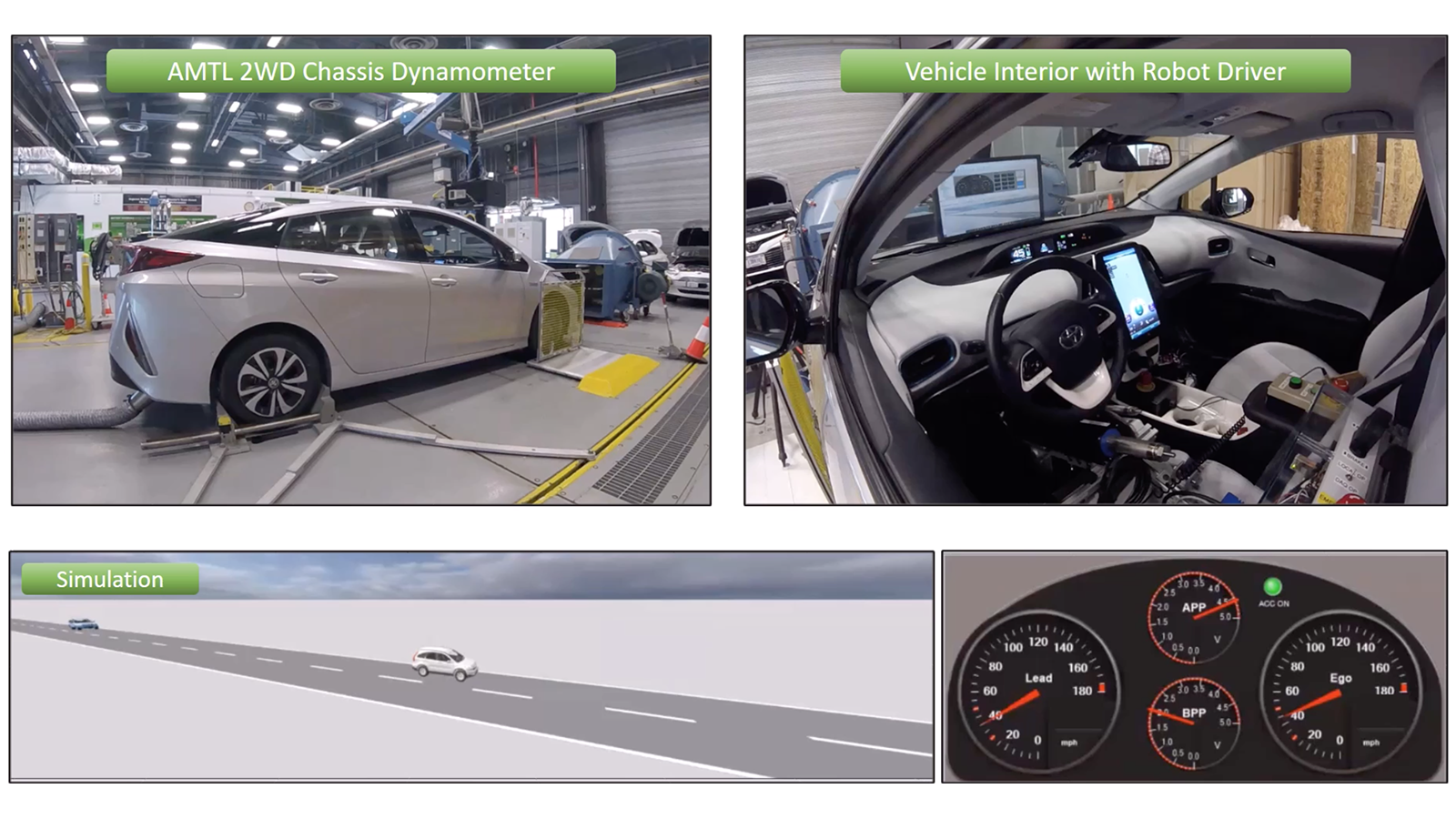Today’s cars are learning to maneuver themselves. From the adaptive cruise control systems already available on the market to driverless cars that haven’t yet hit the road, vehicles now feature increasing levels of connectivity and automation. So far, developers of these automated systems have focused on the necessities of safety and functionality. However, opportunities to improve energy efficiency can be significant.
The U.S. Department of Energy’s (DOE) Argonne National Laboratory has developed a unique platform combining real-world and virtual testing to assess connected and automated vehicle (CAV) technologies. The new approach allows researchers to quickly and cost-effectively evaluate the performance of these technologies in terms of energy use and emissions.
Testing these advanced vehicles’ operation on open roads poses challenges in terms of safety, cost, and privacy. It also does not provide the repeatability required to properly quantify the technology impacts. Argonne’s novel research platform combines hardware and virtual systems to allow for consistent, rapid and realistic evaluation of various driving scenarios. The platform’s acronym, XIL, refers to “everything in the loop,” where the “X” can be a vehicle or other component such as an engine, and then the surrounding environment such as a connected traffic light or neighboring vehicles. Information between the emulated and real-world systems is continuously exchanged, forming a feedback loop.
“This XIL capability and standardized process allows for efficient scenario analysis, robust validation and an understanding of the key factors determining uncertainty in a given test case,” said Aymeric Rousseau, manager of the Vehicle and Mobility Systems group.
Though most of us take the skill for granted, driving is actually a complex process. “Every time you drive, you make countless decisions that affect your energy consumption,” said Thomas Wallner, manager of Advanced Mobility and Grid Integration Technology research at Argonne. Mileage between two drivers on the same route can differ by up to 30 percent depending on driving style. Coasting to a stop, for example, is more efficient than braking hard.
“We are interested in measuring the energy impact of providing guidance to human drivers or substituting them with computers given the additional information available from the surroundings,” Wallner said.
Many standard tests for vehicles involve a chassis dynamometer, which is like a treadmill for cars. On the dynamometer, a person will sit inside the car and follow a predefined speed profile to simulate driving in a city, on a highway or a rural roadway.
“Current methods of testing are not suited to evaluating today’s sophisticated connected and automated vehicles,” said Kevin Stutenberg, principal research engineer. “Since the knowledge of the route and the environment are critical to optimize the energy use of CAVs, you need to create new testing methods that can effectively provide information to the vehicle on the dynamometer or on the track.”
Using Argonne’s RoadRunner tool, the researchers can set up environments that effectively “talk” to individual CAVs, telling them when another car is coming or that a traffic light lies ahead. The environment might be entirely virtual, or instead actual hardware in the lab or on a road. The virtual test cases help cut the time, effort, and expense required to do experiments on the chassis dynamometer or out on a track.
“By the time we test a particular set of vehicle or powertrain controls, we will have done thousands and thousands of simulations,” said Dominik Karbowski, technical manager of intelligent vehicle controls within Argonne’s Vehicle and Mobility Systems Group. “The models we’re using in simulations are never perfect, but they help streamline the experiments—which, in turn, inform changes to the models.”
Using RoadRunner, the Argonne team has developed control algorithms for individual automated vehicles that reduce fuel consumption up to 15 percent and up to 22 percent when integrated with vehicle-to-infrastructure communication of traffic signal information. Having developed these algorithms entirely within a simulated environment, the team is now testing them in the lab using the newly developed XIL capabilities. Pairing the simulations with lab and track or road experiments allows validation of the control benefits and robustness. The platform also allows researchers to probe additional vehicle perception system elements under differing scenarios such as routes or weather conditions.
“Our ambition, and I think we’re on a good way to get there, is to be able to do more of these experiments quickly and systematically, with a broader range of scenarios and vehicles,” Karbowski said.
In one of the first such tests conducted in the XIL framework, the team recently implemented the eco-driving controls on a Chevrolet Bolt electric vehicle, verifying that the Bolt could react to its surroundings, such as approaching a traffic light or adapting to a change of speed limit, confirming the functionality previously estimated through simulation.
This work is funded through the Systems and Modeling for Accelerated Research in Transportation (SMART) Mobility Consortium, an initiative of the Vehicle Technologies Office within DOE’s Office of Energy Efficiency & Renewable Energy.
